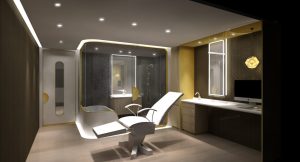PRP or Platelet Rich plasma has helped in various ways like in healing required after a surgery or even in the anti-ageing process. This is one natural regenerative process that happens with an increase in the autologous platelets. Nevertheless, there are many controversies in the usage of the PRP process and here we are going to get into the details of this cost-effective way of getting a standard platelet plasma.
PRP-tubes have been now used by around 600000 doctors and have been used for around 10,000000 treatments. If you are looking for one then you can contact Dr Akhmerov’sPlasmolifting technologies who has been delivering this product worldwide. You can get in touch with a personal account manager who will help you know more about the offers and the various products.
What is a PRP?
PRP is a plasma that has a platelet level more than the peripheral blood concentration. As plasma contains various growth factors, when bought in contact with the endothelium (found in wounds or damaged tissues) then it releases all the growth factors resulting in the process of tissue repair, which promotes wound healing.
Hence an idea was done and that was to increase the concentration of the platelets in that injured tissue, which would then increase the level of multiple bioactive factors and also improves natural healing.
This PRP has been initially used in the field of dentistry for bone and tissue repair. Later it was applied to other fields like plastic surgery, orthopaedic surgery, cardiac surgery, sports medicine and ophthalmology.
What is the cost-effective method to prepare this PRP?
After the approval was given by the Local Ethics Committee, around 18 individuals were asked to help with this study (all between the age group of 22 to 50 years). They were healthy, with no medications or drugs for 10 days before the experiment.
Process:
- A butterfly cannula was used to draw the blood. A 3-way valve was attached to the end of the cannula.
- Sodium citrate solution of around 1 ml of 3,8w/v% was filled into the 10ml vacuum tube from the side valve.
- Then 9 ml of blood drawn from the chosen patient with a help of an 18 gauge needle.
- Samples were gently mixed to anticoagulated with the blood.
- In this way, a total of 55ml of blood was collected from all the participants, filling the 6 tubes.
A centrifugation process was carried out in 2 steps. First, there was a soft spin of 250g was used for 10 minutes and then it was increased to 230g -270g which had maximum platelet recovery from the whole blood. However, the platelet count increases when the centrifugation force increases. This means there was not much difference in the 300g to 500g force, but there was a huge difference in the 500g to 700g force and also 700g to 1000g force. And there was not much difference in the upper group of 1000, 1500 and 2000g. the difference in PRP was about 1.92 to 3.76-fold.
According to the present study, you do not need a commercial kit to prepare a reliable PRP as a platelet concentration aspect could be changed with an increase in the centrifugal force.




